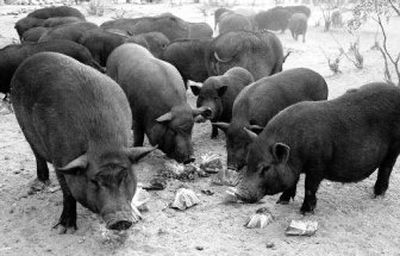Kids sometimes do eat like pigs

When it comes to dining habits, young children may be more like animals than like adults.
Adults eat more in large groups than in small groups because they linger and they socialize. Animals eat more in large groups probably because there is competition for the food.
When researchers sat 54 children, ages 2 1/2 to 6 1/2, down for a graham cracker snack – sometimes at tables for three, other times at tables for nine – the kids ate 30 percent more in the larger group. But it wasn’t because they were discussing a storybook.
“In large groups, the kids don’t dillydally,” says Dr. Julie Lumeng, pediatrician at the Center for Human Growth and Development at the University of Michigan and author of the study. “They start eating sooner, they eat faster and then they leave.”
Even though these children from middle-class families had no worries about food availability, Lumeng speculates that humans are probably hard-wired to eat like animals – quickly and a lot – when there is a lot of stimulation at meal time. With time, they may be socialized into more relaxed habits.
So for young children, the chaotic, feeding frenzy atmosphere of, say, fast-food restaurants might encourage overeating.
The study was published Feb. 14 in the journal Archives of Disease in Childhood.